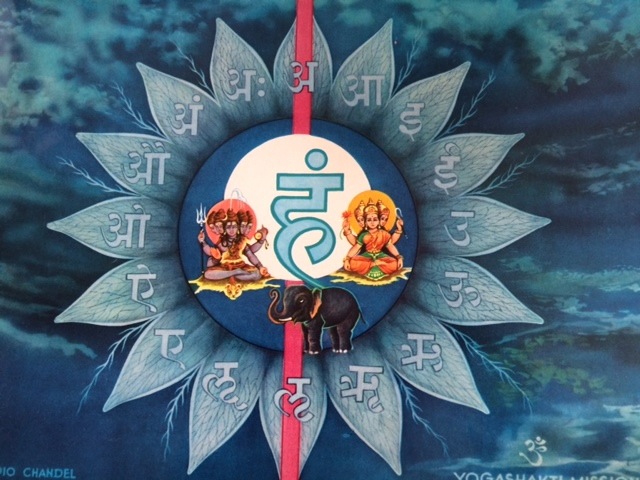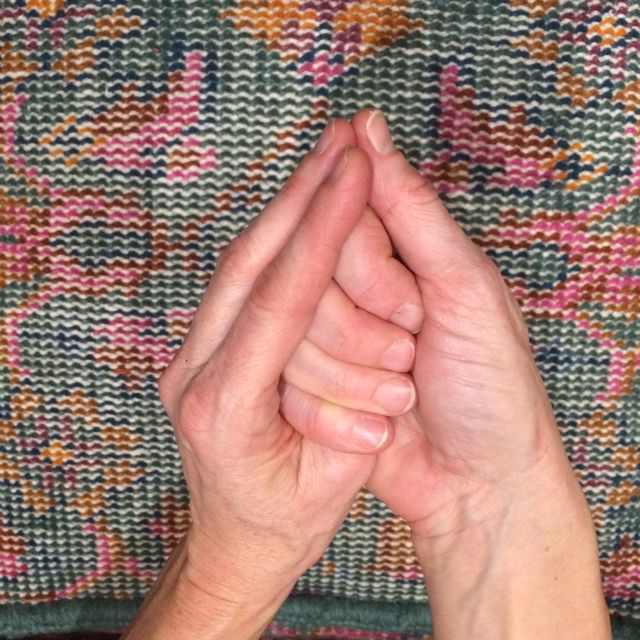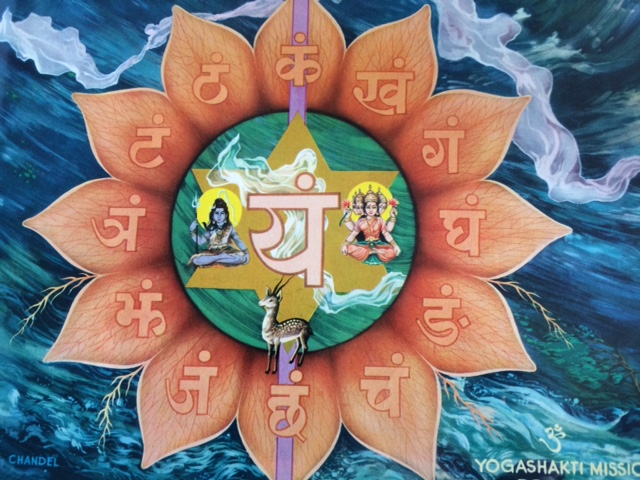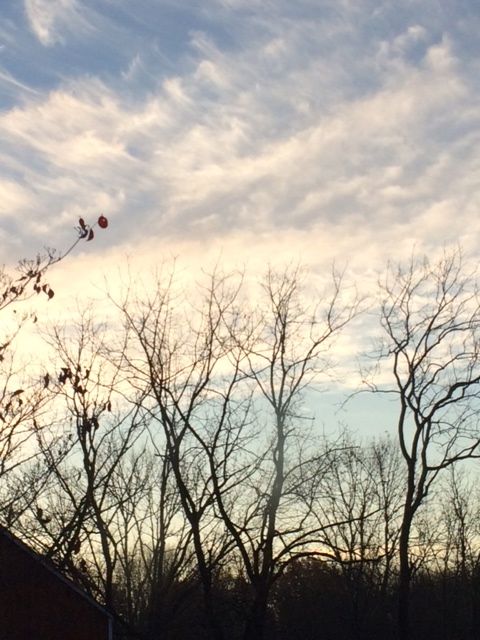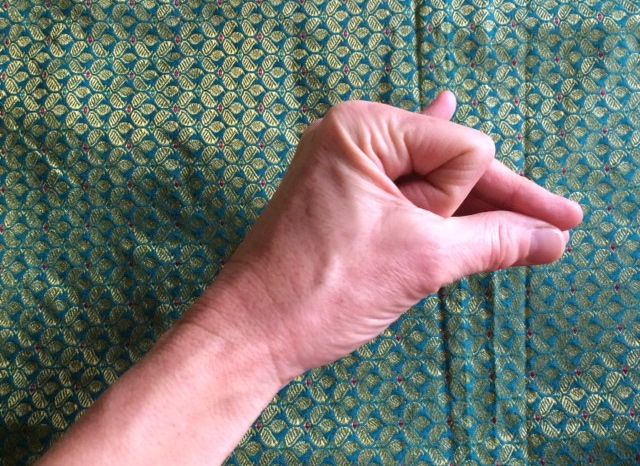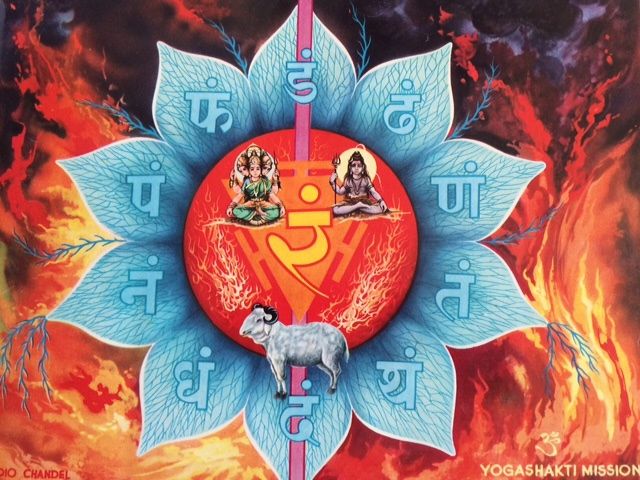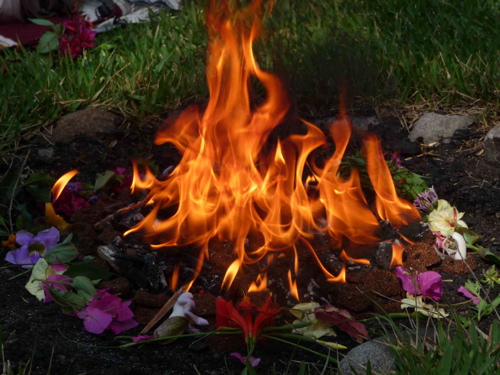SEASONAL SELF-CARE BLOG
Fifth chakra – Visuddha – throat chakra
Posted on February 1st, 2016
Speak your truth and let your creativity flow freely! Enjoy these practices to open Visuddha Chakra, your throat chakra. Join us on instagram @yoga_sukhavati for our #chakraSeries#Thurs and get some tips for opening your chakras every Thursday!
With our fifth chakra, we shift from the physical plane of the lower chakras to the more subtle spiritual realms of upper three chakras. Located in the throat, Visuddha chakra, meaning purification, is associated with the elements ether and controls the principle of sound. It governs speech, communication, and creativity through the vibrational resonance of our voice. Our self-expression is the pathway for our interior world to make itself known in the outside world. The throat is also the internal portal between our mind and body. When our fifth chakra is blocked our creative expression and voice are impaired. We may not speak up for ourselves, be shy, withdrawn,, mutter, stutter, whisper or have a tight voice. If excessive, we may monopolize conversations, speak too loudly or have a shrill voice. When our throat chakra is healthy there is an easy balance in conversation between listening and talking. The voice is resonant, clear, and authentic. We easefully express ourselves and our creativity flows.
The fifth chakra is blue with 16 petals on which are inscribed the 16 Sanskrit vowels. In the center of the lotus is Ham, the bija mantra or seed syllable for Visuddha chakra. Chanting Ham as well as the sanskrit vowels is very healing and opening for the related organs as well as emotional and mental aspects of Visuddha. Singing and mantra practice are wonderful ways to heal imbalances in Visuddha chakra.
ETHER ELEMENT
Vibrational Purification
This photo was taken on my Retreat in Norway at Tomrefjord. Every evening as we sat down for dinner, an exquisite elemental dance of light arose in the vastness of space of the fjord. We were in awe and I had the distinct feeling of being in the presence of the divine.
The throat chakra, Visuddha chakra, means “Purification”. It is the portal to our spiritual dimension. As we purify the toxins from our physical, mental, and emotional bodies through our yoga, meditation, and chanting practices, we also cleanse our subtle body. The element of the throat chakra is ether, or “Akasha”, derived from the sanskrit root “kāś” meaning “to be visible”. Translated as space, sky, atmosphere, Akasha, or ether, is the element in which visibility occurs. The first element created, akasha is the essence from which the other elements arise in the material world. Ether governs sound. Sonic vibrations create a deep cleansing of the etheric body. As such chanting, mantra practice, and singing are very potent means of purification and spiritual awakening.
MATSYASANA (Fish pose)
lotus variation
Do you find it difficult to express your thoughts and feelings? Are you afraid to speak your truth? Do you find that you silence yourself often, wishing you could speak up, but remain mute? Do you have creative impulses that lie dormant? If yes, your throat chakra may be blocked.
The throat chakra governs the free flow of honest communication and creative self-expression. I have found that shoulderstand (sarvangasana) and fish pose (matsyasana) are the most effective asanas to open up the throat chakra. Consistent practice of these poses will help you clear your voice and open the pathway to easeful communication and creativity. Prep for these poses with a healthy dose of shoulder openers to warm up your neck and shoulders. I always include plenty of shoulder openers in my classes, as my students will attest! This picture was taken awhile ago, when I was living in Oakland, California. I have always loved it.
SHANKH MUDRA (Shell Mudra)
Open your voice, clear the pathway to easeful and honest communication, heal throat issues, and unleash your creative self expression.
- Sit comfortably
- Wrap your left thumb with the fingers of your right hand
- Place your right thumb on the middle finger of your left hand
- Hold the mudra in front of your chest
- Chant “Om” several times
- Listen afterwards, letting the echo of the chant reverberate through your being
- Rest in silence
- Enjoy the peacefulness and sense of calm that Shankh mudra awakens inside
Affirmation: I easily express myself and my creativity flows freely!

joyous heart!
Leigh
Fourth chakra – Anahata
Posted on November 17th, 2015
Our fourth chakra, Anahata chakra, means the “unstruck” sound. This chakra is the seat of anahata nada, the transcendent cosmic sound heard only in deep states of meditation. Perceived only through pure consciousness, the sound cannot be heard by the ears or the mind. Anahata chakra is the seat of compassion, divine love, connectedness with all beings. The heart chakra is the center of awakened unconditional love. The personal love and sexual relationship that is prevalent in the second chakra, is elevated to a devotional spiritual love of all beings. Located in the center of the chest, Anahata chakra, is the air element, governing the lungs, heart, thymus gland, circulatory system, arms, and hands.
The fourth chakra is green with 12 petals on which are inscribed the Sanskrit letters, Ka, kha, ga, gha, na, ca, cha, ja, jha, na, ta, tha. In the center of the lotus is Yam, the bija mantra or seed syllable for Anahata chakra. Chanting Yam as well as the sanskrit letters is very healing and opening for the related organs as well as emotional and mental aspects of Anahata.
The beautiful image of the Fourth Chakra is from “The Invisible Seven Psychic Lotuses” by YogaShakti Mission.
AIR ELEMENT
Air is freedom, infinite, expansive, vast, immeasurable. It is everywhere, yet unseen. We can only “see” air in the relationship to the objects it affects like the wind blowing the trees. Air, the element of our fourth chakra, is the most important element, for without it we die. Located in the center of the chest, Anahata chakra governs the lungs and the heart, joining the inner being and outer world through breath and love. In harmony, Anahata chakra is in balance between giving and receiving, what we bring in and what we release in our bodies and lives. The breath supports and directs the flow of Prana, our life force, in our body. Pranayama practices are very effective to awaken Anahata and increase our vitality.
I love this simple breathing exercise to awaken the heart. I call it….
Opening the Wings of the Heart
- Stand comfortably. Breathe into your heart center
- Raise your arms directly in front of you so that your arms are parallel to the floor
- Externally rotate your arms so that your palms face the ceiling
- Inhale, straighten your legs and open your arms out the the sides of the room
- Exhale, bend your knees and draw your arms together
- As you breathe in and out, you can say inside to yourself “I open myself to give and receive love fully”
- You can also do the exercise visualizing that you are standing in front of a vast ocean.
- As you inhale, breathe in the expansiveness of the of the ocean to awaken the infinite compassion in the heart.
- As you exhale and draw your arms towards each other, imagine someone you love standing in front of you, and offer them a beautiful bouquet of flowers.
Repeat many times
PARTNER SHALABHASANA/FLYING DOWNWARD DOG
Awaken joy and heart connection
Yoga offers many beautiful heart opening poses to awaken the heart chakra. If you feel lonely, depressed, fear of intimacy, are withdrawn or act or callously toward others, your heart chakra may be deficient. In excess, you may give too much of yourself away to others in co-dependent relationships. Imbalance in the heart chakra often manifests physically through rounded tense shoulders, sunken chest, and low immunity. If you’re experiencing any of these issues, practice more shoulder openers and backbends to help open the heart chakra and infuse your being with prana, vital life force. Partner poses are a joyous way to nourish the heart chakra and offer balance between receiving and giving, mutual support and open-hearted listening.
APAN VAYU MUDRA
nourish the heart chakra
The vulnerable, tender, and delicate nature of our heart makes it often difficult to stay open through our life journey. Our sweet loving heart often gets wounded in relationships and experiences. So we build up protective barriers and defensive postures which create a kind of numbing of the heart to dull the pain and grief of our emotional wounds. This freezing of the heart, not only keeps out the pain, but also the joy and beauty in our life. When our heart is shut down, we are de-sensitized, lack compassion for others, and have difficulty engaging in relationship. It’s a terribly lonely place. To help bring balance in our heart chakra and awaken vibrancy, love, and tenderness, work with practices to awaken self-love, acceptance, forgiveness, and compassion.
To coax the delicate heart open again, practice Apan Vayu Mudra.
• Place the index finger at the base of the thumb.
• Join the middle and ring fingers and the thumb together.
• Do for 5-15 minutes 3 times a day.
• Try it with this lovely flower visualization & affirmation from Gertrud Hirsch’s book “Mudras”.
“Imagine a red rosebud in your heart. Whenever you exhale, a petal opens, until the entire flower is completely open. The petals now form a rosette, and the rosette gets a bit larger with every breath until the flower is oversized and rests upon your chest. You can feel it’s weight. Just as your chest rhythmically rises and falls while you breathe, the flower moves as well. Perhaps you can even imagine the fragrance of the rose.
Affirmation: I have the time and leisure to see beauty and enjoy silence.”
joyous heart!
Leigh
Third Chakra – Manipura
Posted on November 17th, 2015
The third chakra, “Manipura” means “jewel city” derived from the Sanskrit, “mani” – jewel and “pura” – city. The lustrous gem center, yellow and radiant is located according to some texts in the solar plexus and others in the navel. Manipura, as the fire element, governs our digestive organs: stomach, spleen, liver, gall bladder, pancreas, and small intestines. Related to our ego identity, it gives us our sense of personal power in the world. A person with a balanced manipura chakra has good a good sense of self, is confident, intelligent, productive, focused and responsible as well as playful. They have vibrant energy and are able to take action and manifest their visions in the world with ease. Blockage in the third chakra displays as digestive disorders, low self-esteem, lack of self-discipline, poor follow through on tasks, indecisiveness, anger, hostility or a sense of victimization.
The third chakra has 10 petals on which are inscribed the Sanskrit letters, Dam, Dham, Nam, Tam, Tham, Dam, Dham, Nam, Pam, Pham. In the center of the lotus is Ram, the bija mantra or seed syllable for Manipura chakra. Chanting Ram as well as the sanskrit letters is very healing and opening for the related organs as well as emotional and mental aspects of Manipura.
The beautiful image of the Third Chakra is from “The Invisible Seven Psychic Lotuses” by YogaShakti Mission.
FIRE ELEMENT
Fire is the element of “Manipura”, our third chakra. It is the power of transformation, luminosity, digestion, radiance, intelligence, vitality, and activity. Associated with vision, fire as light is the energy that fuels both outer sight and inner vision of comprehension and recognition. The fire element is Integral to our yoga practice in which the inner heat, activated through asana practice, burns impurities and awakens insight. The earliest term for yoga like activities is Tapas which is derived from the Sanskrit root, “Tap”, meaning “to burn” or “to glow”.
Our digestive fire is called Agni in Ayurveda. Located in the solar plexus, Agni governs metabolism as digestive enzymes and other metabolic processes that break down, digest, absorb, and assimilate our food. Strong agni is also important for nourishment of our tissues and immune system. This photo, taken at a retreat that I led in Guatemala, was for a very powerful Shamanic protection ceremony.
REVOLVED SPLIT-LEGGED HEADSTAND
Shine up your gem center with Parivrttaikapada Sirsasana!

Twists are very beneficial poses for the Third Chakra. Located in the solar plexus/navel area, Manipura chakra governs all of our digestive organs: stomach, spleen, liver, gall bladder, pancreas, small intestines, and large intestines as well as the kidneys. The spiraling action of twists, wrings out physical, emotional, and mental stagnation and sluggishness in our organs. As we unravel the twists, fresh oxygenated and nutrient rich blood rushes in and the stagnant blood is pushed out, offering a deep cleansing and detoxification process. Inverted twists, like Parivrttaikapada Sirsasana, provide an even more effective cleansing of accumulated metabolic waste and toxins from our system.
RUDRA MUDRA
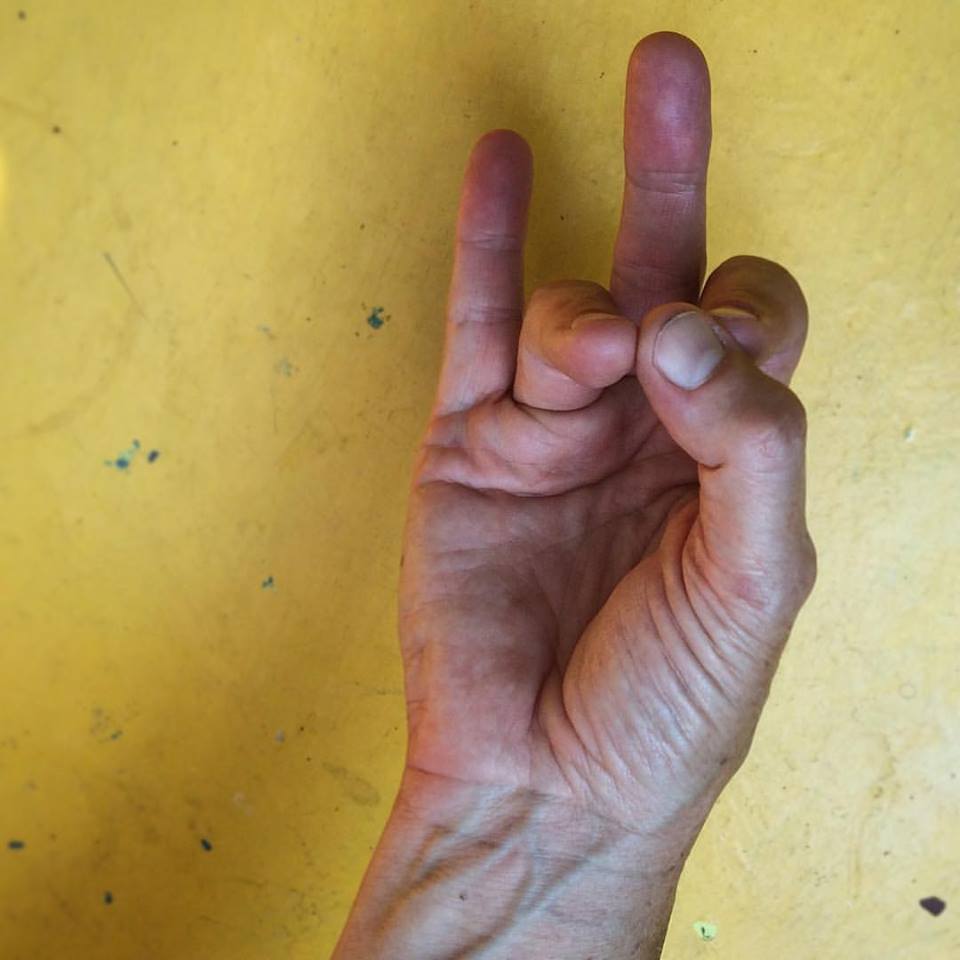 If you’re feeling insecure, unconfident, indecisive, weak & listlessness, and have digestive difficulties, you may have blockage in your third chakra. Try Practicing Rudra Mudra to awaken your solar plexus chakra, revitalize your prana, and strengthen your center.
If you’re feeling insecure, unconfident, indecisive, weak & listlessness, and have digestive difficulties, you may have blockage in your third chakra. Try Practicing Rudra Mudra to awaken your solar plexus chakra, revitalize your prana, and strengthen your center.
• Touch the thumb, index and ring fingers together and extend the other fingers easefully.
• Practice 5 minutes, a few times a day.
• Affirmation: “I rest at my center and draw strength and joy from my center.”
joyous heart!
Leigh
